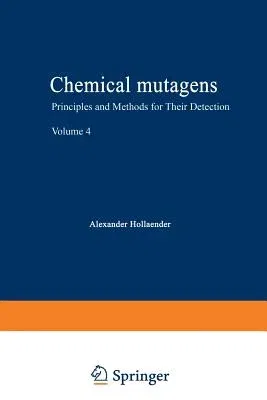Alexander Hollaender
(Author)Chemical Mutagens: Principles and Methods for Their Detection Volume 4 (Softcover Reprint of the Original 1st 1976)Paperback - Softcover Reprint of the Original 1st 1976, 19 March 2012

Qty
1
Turbo
Ships in 2 - 3 days
In Stock
Free Delivery
Cash on Delivery
15 Days
Free Returns
Secure Checkout
Print Length
364 pages
Language
English
Publisher
Springer
Date Published
19 Mar 2012
ISBN-10
1468408941
ISBN-13
9781468408942
Description
Product Details
Author:
Book Edition:
Softcover Reprint of the Original 1st 1976
Book Format:
Paperback
Country of Origin:
NL
Date Published:
19 March 2012
Dimensions:
22.86 x
15.24 x
2.01 cm
ISBN-10:
1468408941
ISBN-13:
9781468408942
Language:
English
Location:
New York, NY
Pages:
364
Publisher:
Weight:
512.56 gm

